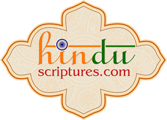
Thangka Painting is a famous art in the town of Tawang in Arunachal Pradesh consisting of a picture panel painted or embroidered on silk appliqué or cotton usually depicting a Buddhist scene or Mandala or deity. The meaning of the word ‘Thangka’ is ‘recorded message’. They are like scroll paintings which are delicate in nature and long lasting and care has to be taken that moisture does not affect the quality of silk hence they have to be kept in dry places. They are important teaching tools as they are visual representations of the teachings of the Buddha, various Lamas and other deities and are used as a religious tool to help further mankind on the path of enlightenment. Depending on the content and design there are many types of Thangkas. The subject matter includes Buddha, Bodhisattva, goddesses, religious objects, animals, flowers, stupas, monastic accessories, plants, animals, flowers etc. These paintings are generally commissioned when there is death or trouble or sickness in the family and when there is a need for an image in connection with a particular religious practice. These images are considered as reference points symbolising the various truths and ideals projected externally which has to be internalised to integrate the profound values within the individual’s mind. Hence these paintings are called the roadmap to enlightenment. They have to be precise in measurement and proportion to enhance the religious values and hence the process behind these paintings is very methodical and requires deep understanding of the symbolism behind it.
